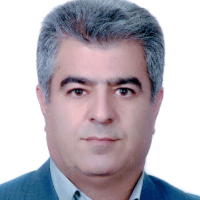Geochemistry and Oxygen Stable Isotopes of Reza Abad Agates, SE Shahrood, Central Iran: An Approach to Temperature and Formation Process
The majority of recent works accept that agates are formed at temperatures <100˚C (Moxon and Reed, 2006) and consist of a variety of silica minerals. The Reza Abad agates are located 150 km from SE Shahrood in the northern parts of Central Iran structural zone with geographic coordinates of 56˚ 25′ 22.52″ to 56˚ 47′ 2.50″E longitudes and 35˚ 55′ 32.68″ to 36˚ 07′ 5.54″N latitudes. The area is a part of the magmatic belt of northern Central Iran, containing a main period of magmatic activities from Eocene to late Miocene in a subduction related volcanic arc setting (Ghasemi and Rezaei-Kahkhaei, 2015). Analyses of the distribution of trace elements and stable isotopes should provide important information concerning the geochemistry of agate and genetic aspects of agate formation. Therefore, in this study, we tried to study the geochemical characteristics of Reza Abad agates, the origin and formation temperature based on the oxygen stable isotope data.
In this research more than 300 samples of agates were collected and six samples of them and three samples of their host rocks were selected for analysis by ICP-AES and ICP-MS methods. The samples were powdered and sent to ALS Chemex Company in Loughrea, Ireland. The oxygen stable isotope studies have been conducted on six samples in black, green, white, gray, red, and yellow agates. Oxygen isotope analyses were carried out on powdered agate using the conventional fluorination method at the Stable Isotope Laboratory in the Department of Geological Sciences, the University of Cape Town, South Africa.
Geochemistry of the agates The studied agates have 97.1 to 99.6 wt.% SiO2 with minor amounts of Al2O3 (0.01-0.13 wt.%), Fe2O3 (0.01-0.59 wt.%), Na2O (0.01-0.06 wt.%), and CaO (0.05-1.08 wt.%). The amount of aluminum is reduced by increasing the percentage of silica in most agates (except black agates) as illustrated in Figure 6. The amount of sodium oxide in brown, red, yellow and white agates is also reduced by increasing the silica content. The trace element analyses of Reza Abad agates and associated volcanic parent were carried out to obtain more information about the geochemistry of agates and their mineral-forming fluids. For this purpose, trace elements and rare earth element values are normalized to chondrite values. The general REE trend is characterized by a negative slope from La to Nd with enriched light REE contents (e.g., La, Ce). Most of the agate samples show a positive Eu anomaly except for white agates (Figure 7). The Reza Abad agates host rocks show an LREE-enriched pattern on the chondrite normalized REE diagram. The similarities in the shape and slope of the rare earth element patterns of the agates and the host volcanic rocks show that the elements forming the agates may have originated from fluids circulating in the host volcanic rock.
Agates , Geochemistry , REE , Oxygen stable isotope , Reza Abad , Shahrood
- حق عضویت دریافتی صرف حمایت از نشریات عضو و نگهداری، تکمیل و توسعه مگیران میشود.
- پرداخت حق اشتراک و دانلود مقالات اجازه بازنشر آن در سایر رسانههای چاپی و دیجیتال را به کاربر نمیدهد.



